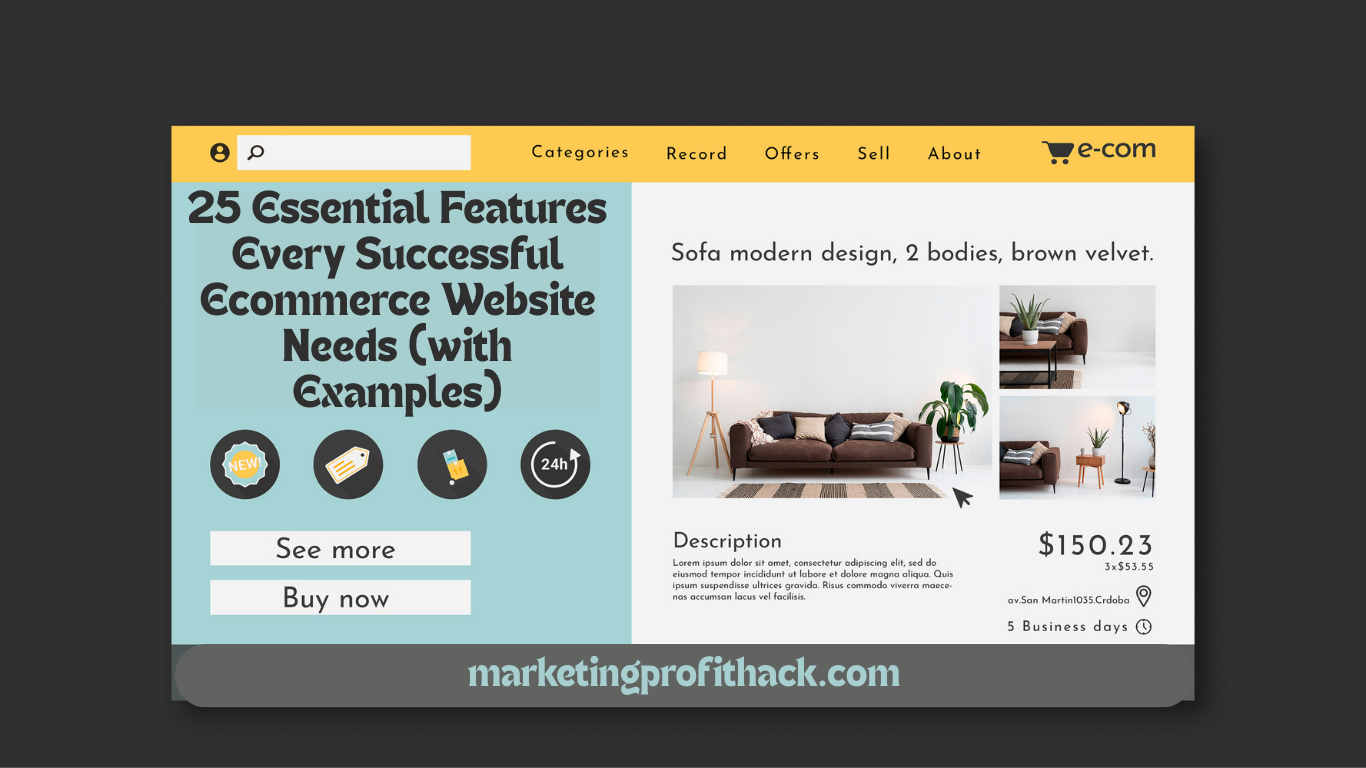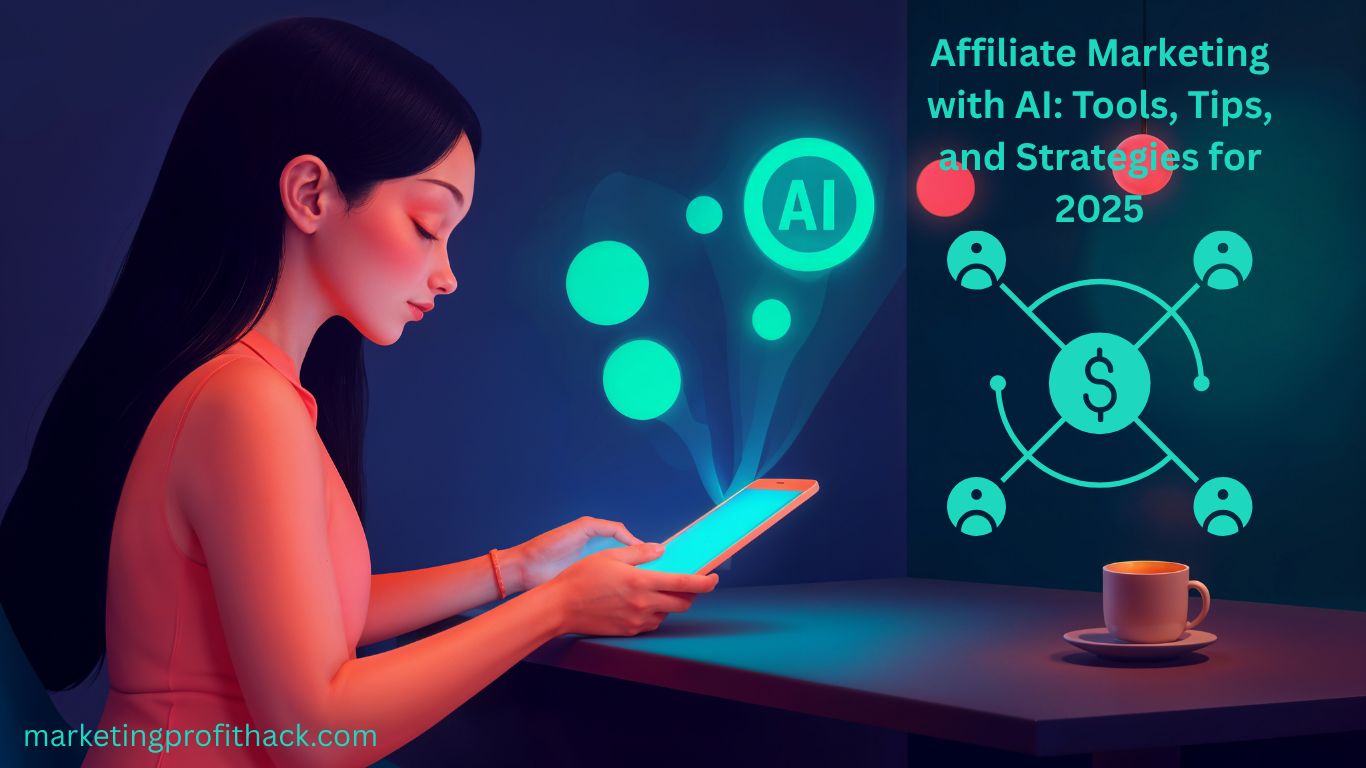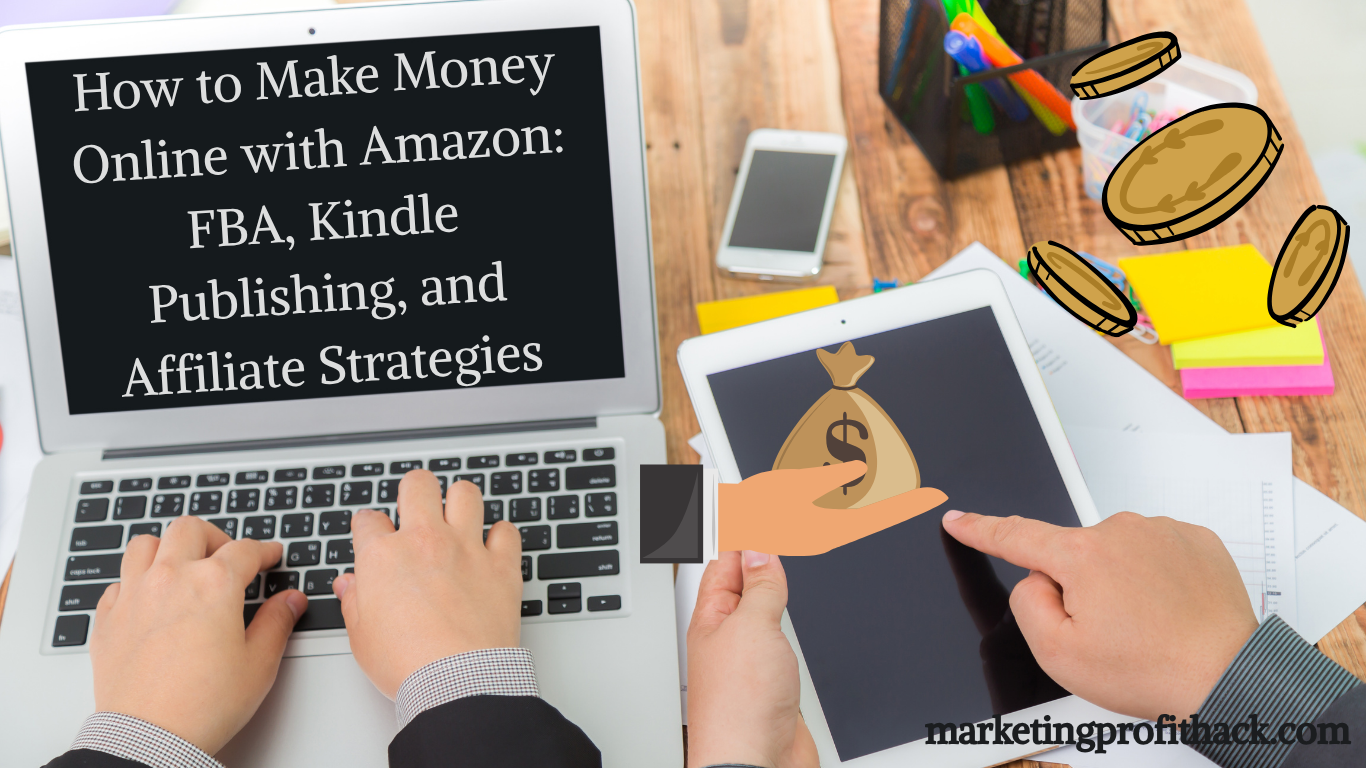25 Essential Features Every Successful Ecommerce Website Needs (with Examples)

Strong 8k brings an ultra-HD IPTV experience to your living room and your pocket.
Welcome to my article “25 Essential Features Every Successful Ecommerce Website Needs (with Examples)”. So, you’ve decided to build an ecommerce website — congrats! You’re about to embark on a wild, thrilling, and occasionally nerve-wracking adventure into the land of product listings, shopping carts, and the elusive “Buy Now” button. Whether you’re selling homemade candles, high-tech gadgets, or llama-themed yoga mats (yes, that’s a thing), there’s one truth that applies to every online store: a successful ecommerce website needs more than a good idea and a pretty logo.
In today’s hyper-competitive digital marketplace, your website is your storefront, salesperson, cashier, and sometimes even your customer service rep — all rolled into one. That means every button, image, and scroll matters. If your site doesn’t load fast enough, goodbye. If the checkout process feels like a puzzle from an escape room, adiós. And if your product pages don’t scream “I’m worth every penny,” well, you get the idea.
That’s why we’ve put together this definitive list of the 25 essential features every successful ecommerce website absolutely must have — along with real-world examples to show you how the pros do it. From must-have basics like mobile responsiveness and secure payment options, to conversion-boosting features like live chat and customer reviews, we’re covering it all. So whether you’re just getting started or planning to revamp your online store, grab your coffee (or energy drink of choice) and let’s make your ecommerce website not just good — but checkout-cart-abandonment-proof great.
Proven Formula for $50-$100 Daily Income with 0 COST — Watch This FREE Video >>
User-Friendly Design and Navigation: Because Nobody Likes a Maze with Pop-Ups
Imagine walking into a physical store where the aisles are labeled in gibberish, the lights flicker like a horror movie, and you can’t find the checkout counter without asking three different people. You’d probably run for the exit — and maybe leave a strongly worded Yelp review on your way out.
Now apply that to your ecommerce site.
A user-friendly design isn’t just a nice-to-have — it’s non-negotiable. Your website should feel like a well-organized, brightly lit boutique where everything is exactly where you expect it to be (but with fewer awkward salespeople lurking near the dressing room). Here’s what that actually means:
1. Clear, Intuitive Navigation Menu
Your navigation menu is the GPS for your site. Keep it simple. Use clear categories like “Shop All,” “Men’s Shoes,” or “Llama Yoga Gear.” Don’t get fancy with clever labels unless your brand is so famous that customers will get the joke (we see you, Cards Against Humanity).
2. Mobile-First Design
If your site isn’t mobile-friendly in 2025, it might as well be printed on parchment. Over half of ecommerce traffic comes from mobile devices, so make sure your layout, buttons, and images all behave themselves on smaller screens.
3. Consistent Layout Across Pages
Consistency is comforting. Use the same layout for product pages, headers, and footers so users don’t feel like they’ve wandered into a completely different website mid-scroll.
4. Search Function with Filters
Some customers like to browse, others know exactly what they want. A search bar with smart filters (price, size, color, “fits my weirdly shaped cat”) helps them find it faster — and keeps them from rage-quitting your site.
5. Breadcrumbs (The Good Kind)
No, not the ones you put on mac and cheese. We’re talking about breadcrumb navigation that shows users exactly where they are in your site’s hierarchy. It’s a tiny but mighty UX feature that makes exploring your store less like spelunking and more like window shopping.
6. Sticky Header or Menu
A sticky header that stays in place as users scroll means they can jump to a new category or go back to their cart with zero hassle. Bonus: it subtly reminds them that they do, in fact, want that third pair of novelty socks.
Bottom line? Make your site easy to use, and people will stick around. Make it confusing, and they’ll flee to a competitor faster than you can say “free shipping.”
Conversion-Boosting Essentials: Turning Clicks into Customers (Without a Magic Wand)
Let’s be real for a second — getting people to visit your ecommerce site is like getting folks to walk into your party. That’s great! But the real win? Getting them to stay, vibe with the music, and leave with a shopping bag full of stuff they didn’t even know they needed. That’s where conversion-boosting features come in. They’re the online equivalent of dimmed lighting, the perfect playlist, and a tray of irresistible appetizers.
Below are the digital tools that turn casual browsers into loyal buyers (without begging, bribing, or casting spells):
7.High-Quality Product Images & Zoom
A blurry product photo is the online version of “trust me, it’s great” — and that’s not enough. Use clear, high-resolution images from multiple angles. Bonus points if you include a zoom feature or 360° views. Customers want to see the stitching, texture, and whether that couch will match their cat’s aesthetic.
8.Persuasive Product Descriptions
No one wants to read a product description that sounds like it was copied from a 2005 tech manual. Highlight the benefits, speak your brand’s voice, and maybe throw in a fun metaphor. (Example: “These joggers feel like a hug from a cloud, but with pockets.”) Bonus: use bullet points for easy scanning.
9.Customer Reviews & Ratings
Shoppers trust other shoppers more than they trust you. Sorry, it’s not personal — it’s just human nature. Display reviews prominently. Add filters like “Most Helpful” or “Photos Only” so customers can scroll through real-world testimonials and selfies. It builds trust and handles objections before you even lift a finger.
Proven Formula for $50-$100 Daily Income with 0 COST — Watch This FREE Video >>
10.Clear Calls-to-Action (CTAs)
“Add to Cart” shouldn’t look like a shy suggestion. Make your CTAs bold, visible, and emotionally persuasive. “Buy Now,” “Snag Yours Today,” or “Get Cozy” (for a blanket shop, obviously) are way more clickable than a gray button that whispers, “maybe purchase?”
11.Live Chat or Chatbot Support
Questions pop up. Fast answers prevent bounces. A live chat option or well-trained chatbot can make the difference between a sale and a sigh. Whether it’s about shipping costs or “Will this shirt survive my washing machine?” — be there for them.
12.Wishlist/Favorites Functionality
Sometimes people are just not ready to commit (no judgment). Let them save their favorite items to a wishlist. This feature also gives you a chance to send a “Hey, still thinking about that lava lamp?” email later. Helpful and just a teensy bit flirty.
13.Related Product Recommendations
You know how Netflix says, “Because you watched…”? Do that, but for shopping. Show customers complementary items or “others also bought” suggestions. If someone’s buying a tent, don’t make them search the entire site for a sleeping bag. Serve it up on a silver platter.
Pro tip: Conversion-boosting features aren’t about tricking your customer. They’re about making their decision easy, pleasant, and — dare we say — delightful. If you do it right, they’ll click that “Place Order” button like it’s the grand finale of a shopping-themed game show.
Trust & Security Builders: Because Nobody Buys From Sketchy McSketchface
You can have the best products, the sleekest design, and a checkout flow smoother than a jazz sax solo — but if customers don’t trust your site, their credit cards are staying firmly in their wallets. Online shoppers are a cautious bunch (rightfully so), and your website has about 3.5 seconds to prove it’s not a phishing trap wearing a pretty theme.
So, how do you earn their trust without showing them your driver’s license and three forms of ID? By integrating the following no-nonsense (but slightly charming) trust-building features:
14.SSL Certificate (HTTPS)
This one’s non-negotiable. If your site still says “Not Secure” in the browser bar, it’s basically the digital equivalent of greeting customers with “Hey, wanna see something illegal?” Get your SSL certificate sorted so that green lock icon shows up, and make sure every single page of your site is encrypted — not just the checkout.
15.Trust Badges and Payment Icons
Security logos (like Norton Secured, McAfee Secure, or “Verified by Visa”) act like the modern-day equivalent of a trustworthy mustache and monocle combo. Toss in familiar payment icons — PayPal, Stripe, Apple Pay — and boom: instant credibility. Just don’t go overboard and slap on 14 badges at once, or you’ll look like a desperate Boy Scout.
16.Clear Return and Refund Policies
Want shoppers to feel warm and fuzzy? Offer a return policy that doesn’t read like a legally binding breakup agreement. Make it simple, fair, and easy to find. A generous return window builds confidence. And let’s be honest — “free returns within 30 days” is basically the “I’ll pick up the check” of ecommerce.
17.About Us and Contact Pages
Faceless websites make people nervous. Show there’s a real human (or team of humans) behind the screen. Share your story, your mission, and a maybe-not-so-serious team photo. Also, give them an easy way to reach you. Email, contact forms, even a phone number if you’re feeling brave. Bonus trust points if you respond within this century.
18.Visible Customer Support Info
Don’t make your customers hunt for help like it’s a side quest in a video game. Put support info in your header, footer, or a friendly little popup. The more accessible your help is, the more trustworthy your whole operation feels. Oh, and “We’ll respond in 2–3 weeks” is not an acceptable response time unless you’re operating via carrier pigeon.
Bottom line: Trust isn’t a feature you can bolt on — it’s something you build with every small interaction. But these tools help set the tone. When people feel safe, heard, and respected, they’re not only more likely to buy — they’re more likely to come back, leave reviews, and bring their friends (aka more wallets).
Checkout & Payment Optimization: Where Carts Go to Convert (Not to Die)
Ah, the checkout page. The digital cash register. The make-or-break moment where dreams are either fulfilled or left behind like that gym membership you swore you’d use. It’s where your ecommerce magic needs to sparkle the brightest — because even the most enthusiastic shopper can abandon ship if things get clunky, confusing, or just plain annoying.
So let’s make sure your checkout process isn’t where good intentions go to die. Here are the must-haves for a smooth, trust-inspiring, and dare we say delightful path to purchase:
19. Guest Checkout Option
Nobody wants to create “Yet Another Account” just to buy a cactus-shaped mug. Offering guest checkout is the online equivalent of saying, “No pressure, we just met.” Of course, you can always ask them to sign up after the sale — but first, let them seal the deal.
20. Multiple Payment Methods
Credit cards are cool, but some shoppers like to roll with PayPal, Apple Pay, Google Pay, Klarna, or even cryptocurrency (hello, digital rebels). Give them options. The more, the merrier — and the less chance someone bounces because their wallet doesn’t match your payment processor.
21. Autofill & Address Validation
Typing out your shipping address from scratch on a phone keyboard is peak frustration. Enable autofill, offer Google Address Lookup, and include a ZIP code validator so customers can breeze through the form like a checkout ninja.
22. Progress Indicators
People like to know where they are in a process — whether it’s ordering pizza or escaping a haunted house. Show them a clear checkout progress bar (e.g., Shipping > Payment > Review > Done!) so they know exactly what’s next. It reduces anxiety and abandoned carts.
23. Clear Shipping Costs & Delivery Estimates
Nothing tanks a checkout faster than a surprise $14.95 shipping fee showing up at the last second. Be transparent. Show shipping options, costs, and estimated delivery dates upfront. Bonus points for offering free shipping or at least a countdown to qualify: “You’re $7 away from free shipping!” It works, and it’s sneaky-good psychology.
24. Save Cart for Later
Sometimes life interrupts the shopping groove. (Looking at you, unexpected Zoom calls.) A “Save for Later” or “Email My Cart” option gives shoppers a way to pick up where they left off — without having to start over and wonder where their novelty mug went.
25. Exit-Intent Offers
If someone’s about to bounce at checkout, you’ve got one last chance to change their mind. A well-timed pop-up offering a small discount (“Wait! Here’s 10% off!”) or free shipping might just be the nudge they need. Don’t be pushy — be persuasive.
Proven Formula for $50-$100 Daily Income with 0 COST — Watch This FREE Video >>
Bonus Tip: Make sure your checkout is mobile-optimized, loads lightning fast, and doesn’t require customers to decode cryptic error messages. Every second matters. If Amazon can do it in one click, you can at least keep it under five.
Checkout is your final impression — so make it seamless, stress-free, and maybe even a little fun (emoji-enabled confirmation pages, anyone?). Nail this step, and you’ll not only close the sale — you’ll start a relationship worth repeating.
SEO, Analytics & Scalability: Because You’ve Got Big (Ecommerce) Dreams
So, you’ve built the perfect ecommerce site — your product pages pop, your checkout process is smooth, and your customers are practically begging to buy. But here’s the kicker: none of that matters if your website isn’t showing up when people search for “best llama yoga mat” or “cactus-shaped mugs for hipsters.” That’s where SEO, analytics, and scalability come in. They’re like your secret ingredients for success — part strategy, part hard data, and part futuristic planning.
Here’s how these three powerhouse elements work together to take your ecommerce site to the next level:
26.SEO Optimization: Make Google Your Best Friend
Let’s face it: if your website isn’t optimized for search engines, it’s like building a brick-and-mortar store in the middle of the desert. Sure, it’s a great store, but no one’s going to find it unless they’ve got a treasure map. SEO (Search Engine Optimization) is the map that leads customers straight to your digital doorstep.
On-Page SEO: This is all about making sure search engines know what your pages are about. Use relevant keywords, craft detailed product descriptions, and ensure your images have alt text. Google’s like a super picky librarian — it wants to know exactly what’s in the book before it recommends it.
Technical SEO: This is the behind-the-scenes magic that helps Google’s spiders crawl your site without tripping over broken links or slow load times. Focus on things like optimizing site speed (because, seriously, no one’s waiting for a page to load in 2025), mobile responsiveness (see above), and ensuring your URLs are neat and tidy.
Content Marketing: Google loves fresh, valuable content. Start a blog, offer buying guides, or create videos around your niche. If you sell yoga mats, write a post about “The Best Yoga Practices for Flexibility” or “Top 5 Yoga Mats That Won’t Slide During Your Downward Dog.” It’s content marketing 101, and it works like a charm.
With the right SEO practices, you’ll not only show up in search results — you’ll climb the ranks like a goat on a rock.
27. Analytics: Know Your Numbers, Know Your Power
If SEO is the game plan, then analytics is your playbook. You can’t improve what you can’t measure, and luckily, there are plenty of tools to track how your site is performing. Here’s how to get the most out of your data:
Google Analytics: Track traffic, conversions, and customer behavior. What products are people clicking on? What’s making them bounce? Google Analytics is like your personal store detective, except it doesn’t need coffee breaks.
Heatmaps: Tools like Hotjar or Crazy Egg let you see where users are clicking, scrolling, and even abandoning their carts. It’s like having a map of your customers’ brains — and it’s insanely helpful for optimizing user experience.
Conversion Tracking: Set up goals and monitor your conversions. Are your visitors adding items to their cart but not checking out? If so, it might be time to revisit your checkout page design or offer a small incentive like free shipping.
The more you know about how your customers interact with your site, the easier it is to fine-tune your ecommerce strategy for better sales and happier shoppers.
28. Scalability: Growing Pains Aren’t Fun, But Planning Ahead is
As your ecommerce business grows, so will your needs. You don’t want your website to collapse like a house of cards when you hit your first viral sales day. That’s where scalability comes in — it’s about building a website that can grow with you and handle an increase in traffic, orders, and product listings without breaking a sweat.
Platform Scalability: Choose an ecommerce platform that can grow with you. Shopify, WooCommerce, and BigCommerce all have options that allow you to scale up your operations with minimal stress. Look for platforms that offer flexible pricing, additional features, and a vast app marketplace.
Server & Hosting: Make sure your hosting service is capable of handling high traffic volumes. If you’re getting millions of pageviews (congrats, by the way!), you’ll need a hosting solution that can scale. Cloud hosting is a great option because it can adjust to your site’s needs as they grow.
Inventory Management Systems: As you add more products, inventory management becomes crucial. Invest in a system that integrates with your ecommerce platform to keep track of stock levels, manage suppliers, and prevent overselling.
Automated Processes: As your business scales, consider automating repetitive tasks like email marketing, order confirmations, and customer service chatbots. It’s like having a virtual assistant who never takes a coffee break.
The key is to start with a strong foundation that supports future growth. With the right tools in place, scaling up won’t feel like driving a truck through a tiny alley.
SEO, analytics, and scalability aren’t just buzzwords — they’re the pillars that support a sustainable, growing ecommerce business. With the right SEO strategy, data-driven decisions, and an eye toward future growth, you can turn your small shop into an ecommerce empire. And hey, if all else fails, there’s always room for one more llama yoga mat.
Conclusion: Wrapping Up Your Ecommerce Superpowers
Well, well, well… look at you! You’ve just gotten the inside scoop on the 25 must-have features every ecommerce website needs to succeed. At this point, you should be feeling like a digital wizard, armed with the best tools and strategies to build a site that not only attracts customers but keeps them coming back for more. Ready to put these features into action? Let’s go!
From user-friendly navigation to high-converting checkout pages, your ecommerce site is about to undergo a glow-up that would make even Instagram influencers jealous. And don’t forget the crucial trust and security elements — we all know customers are more likely to click “buy now” when they feel like they’re not going to be scammed into buying a potato peeler that definitely does not work.
And hey, if things don’t go perfectly the first time, don’t sweat it! Every ecommerce mogul had to tweak their site a few times before hitting the jackpot. So get started, embrace the journey, and before you know it, your site will be so optimized that even your grandma will be telling her friends about your products.
Now, go forth and conquer the ecommerce world, one “Add to Cart” at a time. Your customers are waiting, and they can’t wait to see what you’ve got in store (literally).
Proven Formula for $50-$100 Daily Income with 0 COST — Watch This FREE Video >>
Thanks a lot for reading my article on “25 Essential Features Every Successful Ecommerce Website Needs (with Examples)“ till the end. Hope you’ve helped. See you with another article.
Source: 25 Essential Features Every Successful Ecommerce Website Needs (with Examples)
Affiliate Disclaimer : Some of the links in this article may be affiliate links, which means I receive a small commission at NO ADDITIONAL cost to you if you decide to purchase something. While we receive affiliate compensation for reviews / promotions on this article, we always offer honest opinions, user experiences and real views related to the product or service itself. Our goal is to help readers make the best purchasing decisions, however, the testimonies and opinions expressed are ours only. As always you should do your own thoughts to verify any claims, results and stats before making any kind of purchase. Clicking links or purchasing products recommended in this article may generate income for this product from affiliate commissions and you should assume we are compensated for any purchases you make. We review products and services you might find interesting. If you purchase them, we might get a share of the commission from the sale from our partners. This does not drive our decision as to whether or not a product is featured or recommended.
Note: IndiBlogHub features both user-submitted and editorial content. We do not verify third-party contributions. Read our Disclaimer and Privacy Policyfor details.







